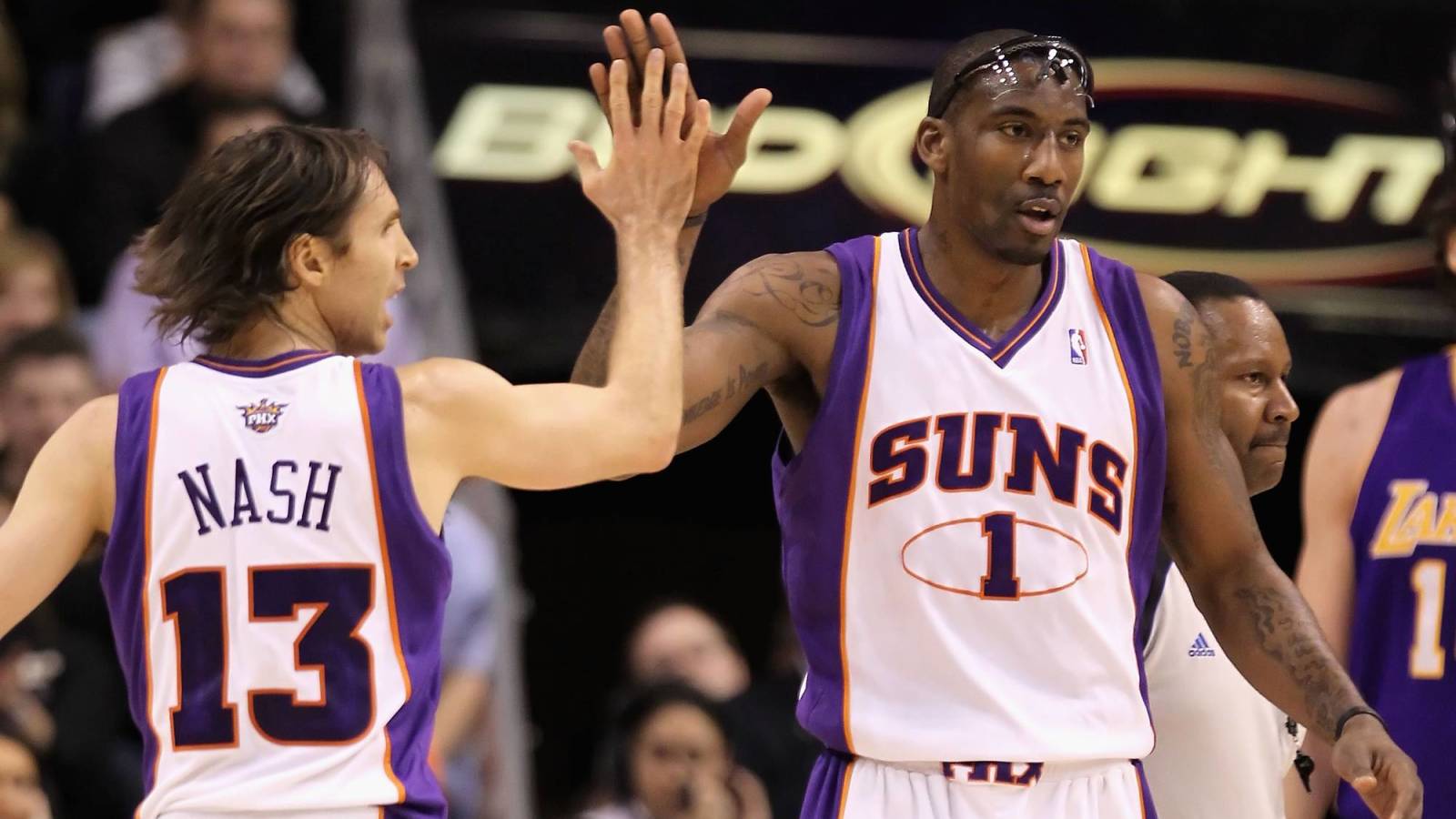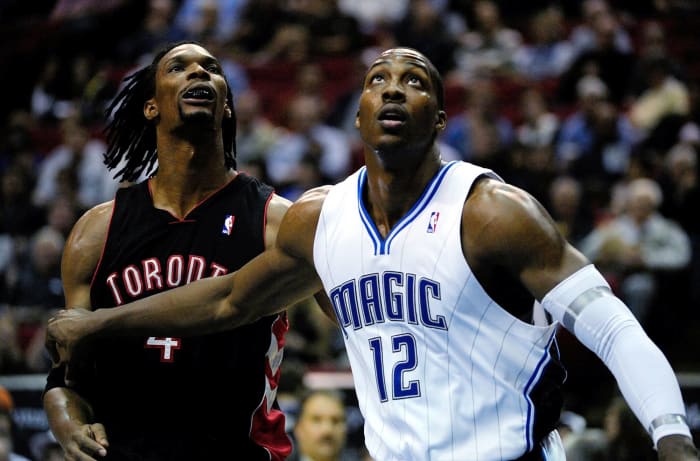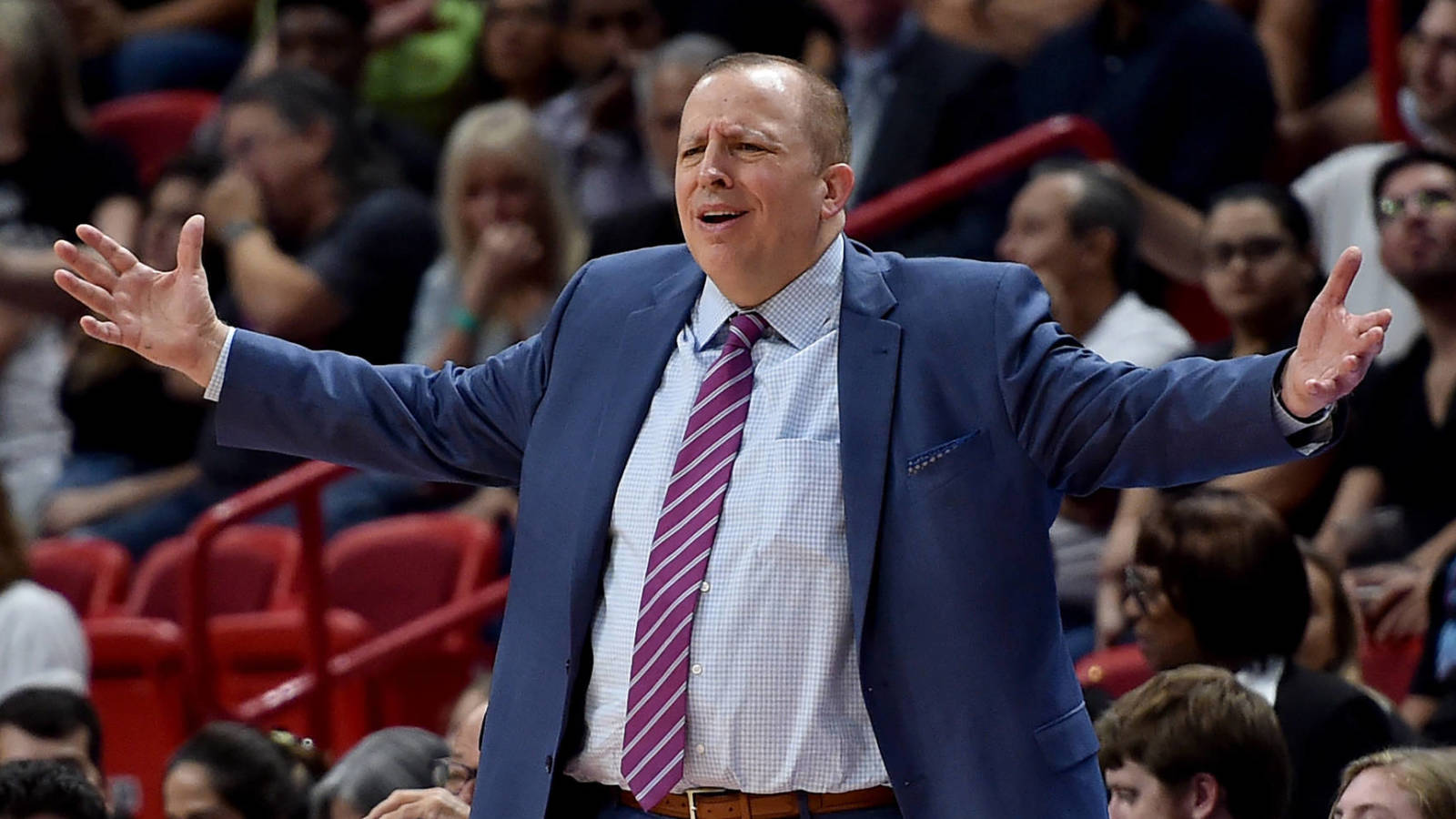
Good, but ...: Four teams left out of NBA 'Team of the Century' tournament
With a field of only 32 teams for Yardbarker's NBA "Team of the Century" tournament, it was inevitable that good and memorable teams wouldn’t make the cut. Here’s our “first four out,” 21st-century teams that had the bona fides but weren't quite good enough:

2009-10 Suns | Record: 54-28
NOTABLE: Lost in Western Conference finals to Lakers.
When there’s talk of the great Steve Nash-led Suns teams, this one always seems to get lost in the shuffle, mostly because it wasn't supposed to be all that good. Yet thanks to some emerging young players, a moneyball-style free agent pick-up and an all-time great duo in Nash and Amar’e Stoudamire, this Phoenix squad might have been a Kobe Bryant airball away from competing for a championship.
The previous season was a mess for the Suns. They finished with only 46 wins in 2008-09 and finally jettisoned Terry Porter in favor of Mike D’Antoni disciple Alvin Gentry. Gentry revved up the team’s pace to the speeds of their mid-'00s glory years in the final weeks of the 2008-09 season, but it did nothing to suggest the following year would be a return to old heights. The offseason also brought with it a lot of turnover. The departures of an aging Shaquille O’Neal and an expanding Boris Diaw left vacancies in the frontcourt, while the exits of veterans Raja Bell and Matt Barnes left holes on the wing.
The Suns went into the '09-10 season looking to plug those roster gaps with a mishmash of uninspiring young talent — like Goran Dragic and Robin Lopez, both of whom looked lost in their rookie campaigns — and unproven vets. It was a risky gambit that eventually became a key reason behind this team’s surprising success. With Gentry’s backing, Dragic went from possible washout to promising player. He spearheaded a rare, five-man mob that tore into the reverse units — that group outscored teams by 9.9 points per 48 minutes, impressive for a bunch of bench players.
Joining Dragic in that group was undersized big man Lou Amundson (featured in 79 games that season), a young Jared Dudley (45.8 percent from three in 09-100, an in-his-prime Brazilian Blur, Leandro Barbosa (9.5 points per game in just 17.9 minutes) and perhaps the signing of the previous summer, Channing Frye. In Portland and before that, New York, Frye was a flailing first-round pick. A positional tweener who couldn’t post up and mainly specialized in jacking long twos, Frye attempted a total of 70 three-point shots in his four seasons before arriving in Phoenix. During the '09-10 season, he attempted 392 and made 43.9 percent of them.
The foresight the Suns had to turn Frye into a volume shooter from beyond the arc is perhaps the move that returned them to the perch of the league’s best offense that season. The '09-10 Phoenix team averaged 115.3 points per 100 possessions, the eighth-highest mark in league history. And after a faulty defense undermined them early in the year, a crafty zone boosted the team to a 23-6 record after the All-Star break.
Their playoff run featured a 4-2 series win over a frisky, Brandon Roy-led Blazers team in Round 1. In the conference semis, Nash found some catharsis by demolishing the Spurs in a 4-0 series sweep. In the Western Conference Finals, with the series tied 2-2, Bryant’s last-ditch shot attempt missed everything but wound up in teammate Ron Artest’s hands. His ensuing lay-in gave the Lakers a 103-101 win and effectively ended the Suns season.

2018-19 Bucks | Record: 61-21
NOTABLE: Lost in Eastern Conference finals to Raptors
Between the Raptors gamble for Kawhi Leonard paying off in a championship and the Warriors dynasty dismantling due to injuries, the utter dominance of this Milwaukee team will likely get lost in the shuffle. Despite notching “only” 61 wins, the Bucks regular-season scoring margin last year was the ninth-best of this decade, even finishing ahead of the 66-win 2012-13 Heat team. Milwaukee finished with the league’s fourth-best offense in '18-19 and best overall defense. Finishing in the top five on both ends of the floor is typically the mark of a truly dominant team.
2018-19 was the season Giannis Antetokounmpo took his game to “perennial MVP status.” The Bucks franchise forward averaged 27.7 points, 12.5 rebounds, 5.9 assists and 1.5 blocks. Antetokounmpo’s 2018-19 campaign marked the first time we could say with authority we were watching a future Hall of Famer.
Like with the Suns team above, Antetokounmpo benefitted from a savvy free-agent signing. Brook Lopez, who began his career as a traditional post up big, continued his outside evolution in Milwaukee. Lopez hoisted a career high 512 three-point attempts in 2018-19, hitting a career-high 36.5 percent of them. His presence — on both ends of the floor — worked with Antetokounmpo’s rise to create a dominant squad.
Surrounding those two were Eric Bledsoe (15.9 points per game), All-Star Khris Middleton (18.3 points per game) and steady veteran guard Malcolm Brogdon (15.6 points per game). Milwaukee also made in-season deals for veteransGeorge Hill and Nikola Mirotic to create a roster as deep and balanced as any we’ve seen in the past two decades.
In another year, this was a team that at least makes an NBA Finals. And even last year, it looked well on its way, romping over Detroit and Boston in just nine games before meeting up with Leonard’s Raptors. Lots of great teams/players have met unceremonious playoff ends, just like this Milwaukee team.

2008-09 Magic | Record: 59-23
NOTABLE: Lost in NBA Finals to Lakers.
There was once a time when Stan Van Gundy was considered an innovator. As other clubs still refused to hop on the spread pick-and-roll trend, Van Gundy put together a perfect lineup for it. This Orlando team featured the league’s best defense and 11th-best offense.
It was also anchored by a dominant, in-his-prime Dwight Howard (20.6 points and 13.8 rebounds per game that season). Surrounding Howard was a bunch of shooters and crafty role players. Rashard Lewis (17.7 points per game) may never be separated from his massive contract, but his 39.7 percent shooting on 7.0 three-pointers per game that season helped keep Howard free in the paint. Joining Lewis in the frontcourt was small forward Hedo Turkoglu (16.8 points per game), who operated both as complementary piece (35.6 percent from three) and primary operator (4.9 assists per game), especially after point guard Jameer Nelson was lost for the season to injury.
Other fun members of this supporting cast were ballhandling wizard Rafer Alston (12.0 points and 5.1 assists per game), rookie Courtney Lee (8.4 points per game on 40.4 percent from three) and defensive specialist Mickael Pietrus (9.4 points per game on 35.9 percent from three). This team was so deep, versatile and filled with shooting that a 24-year old J.J. Redick barely played (just 17.4 minutes in only 64 games).
This Magic team wasn’t some utterly dominant group forgotten thanks to bigger narratives or bad luck. It was, however, ahead of its time and would give any group in our field of 32 a run for its money.

2010-11 Bulls | Record: 62-20
NOTABLE: Lost in Eastern Conference finals to Heat.
We just weren’t ready for Tom Thibodeau. Whispers of Thib’s influence during previous seasons on the defensively dominant Boston had seeped out, but this was our first look at him as a head coach. And in in his first season in Chicago, Thibodeau built a defense that suffocated the rest of the league. The Bulls finished tied for first overall — only matched by Thibodeau’s former employer — when it came to stopping their opponents from scoring. The gap between the Bulls' and Celtics' defenses and the next-closest team was almost a full two points per 100 possessions.
This was the season we learned who Omer Asik was and how valuable Joakim Noah’s energy and mobility was to a team’s defense. The defensive impact of those two players was propped up on offense by an ascending Derrick Rose (25.0 points and 7.7 assists per game). Rose’s electric offensive displays from this season, along with Chicago’s overall success, would go on to win him the MVP Award.
Other notable characters on this Bulls squad included two-way wing Luol Deng (17.4 points per game), a player still at his peak self and not yet crushed by seasons of heavy minute loads (he averaged 39.1 minutes per game in '10-11). Carlos Boozer was a frontcourt, bucket-getter, averaging 17.5 points per game between post ups and high-arching jumpers. A young(ish) Taj Gibson (7.1 points, 5.7 rebounds per game) also came off the bench to buoy the defense.
Like the Magic team above, the Bulls defense and peak Rose would have given a lot of our field of 32 trouble. Unfortunately, they came up just short and didn’t get a chance to bust our bracket.
More must-reads:
- The best buzzer-beaters in basketball history
- 32 teams, one champ: NBA 'Team of the Century' tournament
- Why 2016-17 Warriors are best NBA team of all time
Breaking News
Customize Your Newsletter
 +
+
Get the latest news and rumors, customized to your favorite sports and teams. Emailed daily. Always free!

